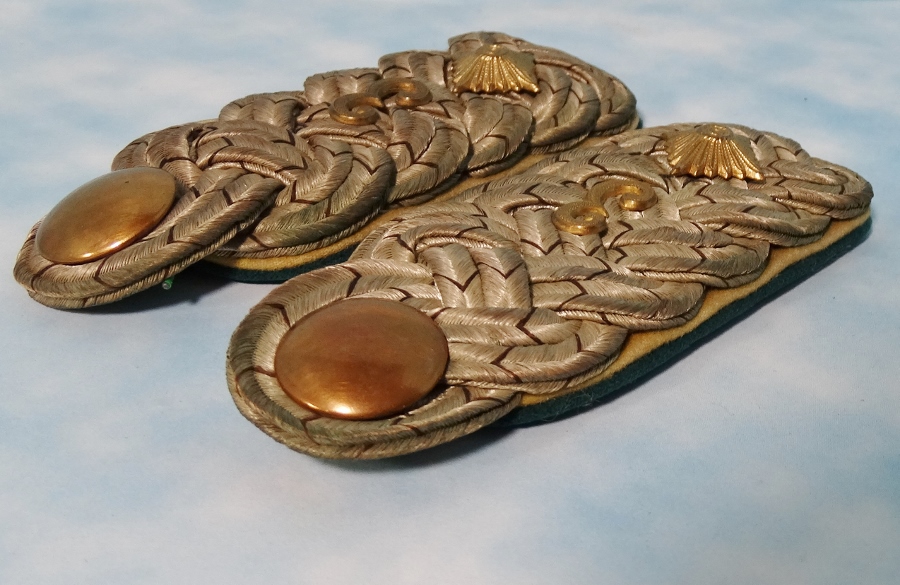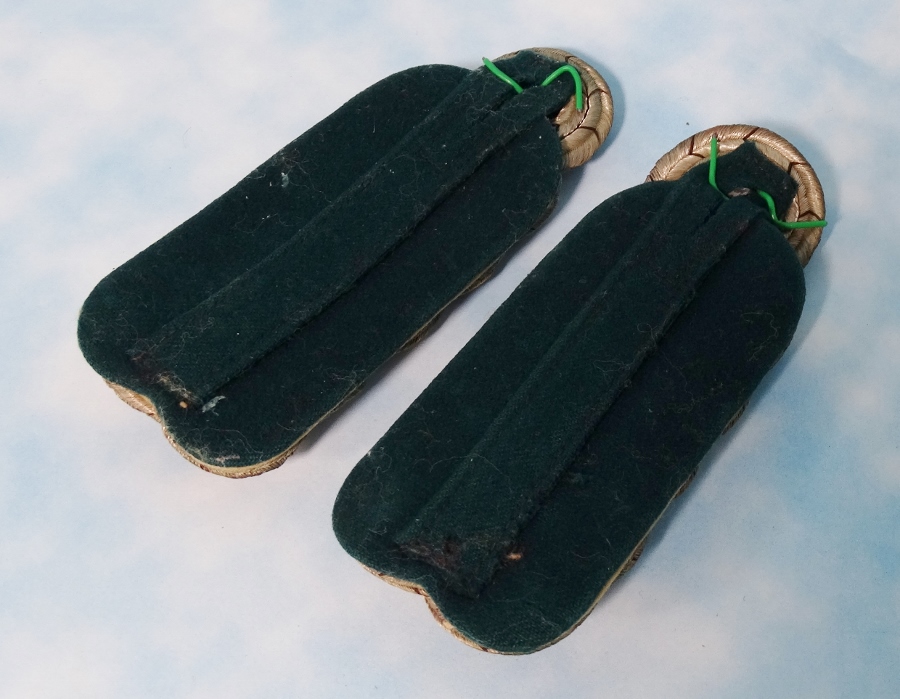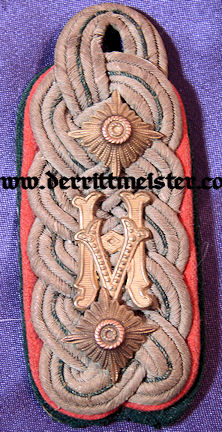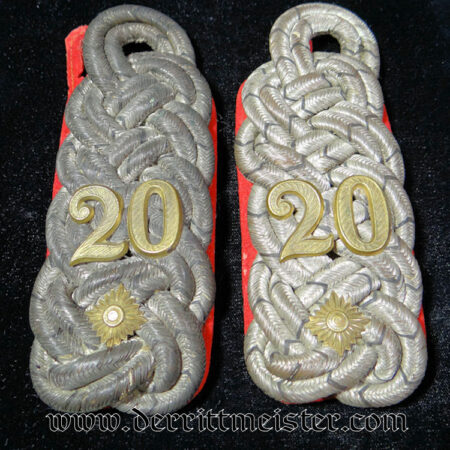Description
This is an ultra-high-quality pair of an Oberstleutnant commanding Jäger-Regiment zu Pferde Nr 3’s shoulder boards. The regiment was garrisoned at Colmar i. E. It was raised in1905 and assigned to the XV. Armeekorps. [It is interesting to note that the Jäger zu Pferde Regiments were obsolete BEFORE they were created. The concept for this regiment-type was that they should be MOUNTED Jägers (similar to the Infanterie’s Jägers), acting as the Army’s eyes and engaging the opposition’s similar troops. They were then tasked with concentrating on the opposition’s officers and NCO’s in order to create chaos among the troops. Much of this changed with the 1870-1871 Franco-Prussian War, as the introduction of fast firing rifles and cannons removed their advantage. In fact, the LAST cavalry charge took place in the Franco-Prussian War. The dawn of the machine gun was at hand. By 1905 the machine gun was a reality and additional cavalry regiments were totally unnecessary. The Army, however, was slow to acknowledge the new reality. Three Jäger zu Pferde Regiments, including Jäger-Regiment zu Pferde Nr 3, were created in 1905. Another was created in 1906, followed by one in 1908, one in 1910, and seven in 1913. Thus, fourteen of these virtually useless regiments were in service when WW I began. As soon as trench warfare was developed, ALL cavalry regiments, no matter how elite, were dismounted to fight beside their infantry comrades. It was sheer nonsense to create fourteen regiments of totally useless troops. The Kaiser and/or his military advisors failed here, miserably].
The shoulder boards measure 1 3/4” x 4 ½.” Each features a numeral “3″ for the regiment, along with a gilt button on each shoulder board. Finally, we see a single gilt pip for the rank of Oberstleutnant. Their reverses display two underlays. A white underlay is immediately beneath the shoulder board, followed by the blue underlay.
These are ultra-rare shoulder boards. How many commanders would this regiment have had from 1905 through 1918? My guess would be two or three. These would make a real find for your collection.






